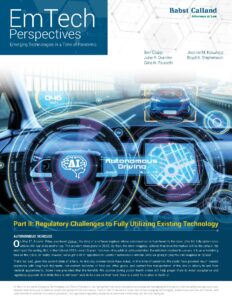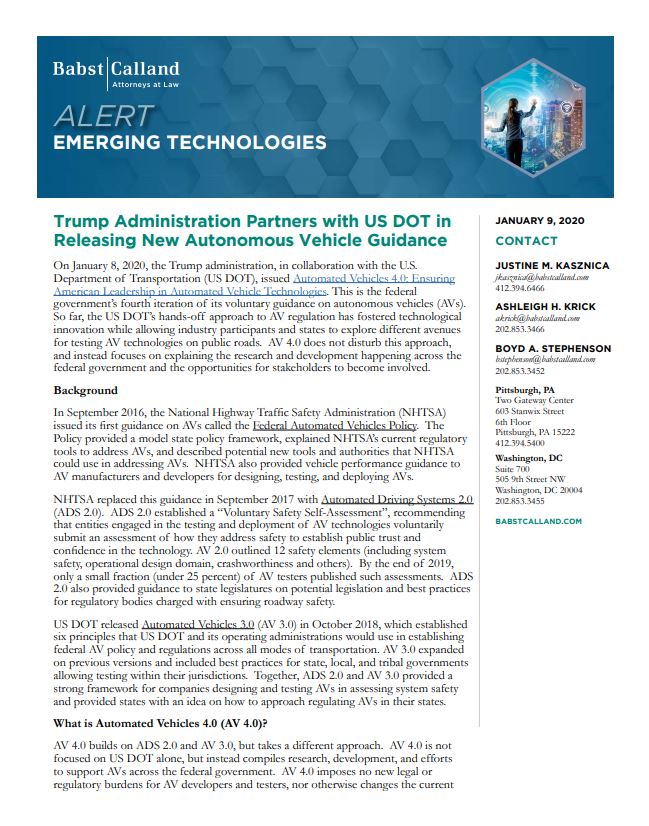 Attorney Justine Kasznica would be the first to admit that she moved to Pittsburgh to take a chance on an apparent regional business renaissance driven by a promising technology sector. Over time, the region hasn’t disappointed.
Attorney Justine Kasznica would be the first to admit that she moved to Pittsburgh to take a chance on an apparent regional business renaissance driven by a promising technology sector. Over time, the region hasn’t disappointed.
“It’s an incredibly exciting time to be in this region and to be an attorney working with emerging technologies,” said Kasznica, who quickly would find her way into the center of Pittsburgh’s technology universe and help drive significant industry growth as part of a flourishing entrepreneurial ecosystem here.
“We are absolutely capturing a moment in history in this tri-state region,” she said. “To be able to experience the outputs of the efforts of the technologists across the region and to be part of the investor and adviser teams who are helping them grow is as rewarding as it is exciting.”
Today, Kasznica serves as a shareholder of Babst Calland, leading the firm’s emerging technologies group and serving on the front lines of a local industry sector that has gained global recognition while also facing its share of business and legal challenges. Babst Calland is one of the Pittsburgh region’s largest law firms…
To view the full article and video interview, click here.
To view the PDF, click here.
 Regulatory Challenges to Fully Utilizing Existing Technology
Regulatory Challenges to Fully Utilizing Existing Technology
On May 1st, Amazon Prime premiered Upload, the story of a software engineer whose consciousness is transferred to the cloud after his fully autonomous vehicle (AV) rear-ends another car. The accident takes place in 2033. By then, the show imagines, vehicles that drive themselves will be the default. We won’t spoil the ending. But, in the fictional 2033 only 13 years from now—the public is astounded when the vehicle is involved in a wreck. It is an entertaining take on the future. In reality, however, we’ve got a lot of regulations to update if autonomous vehicles (AVs) are going to play the role imagined in Upload.
Read More.
Tags: Autonomous Vehicles,
Coronavirus,
COVID-19,
Drones,
Efficiency,
Emerging Technology,
Industry News,
Innovation,
Mobility,
Pandemic,
Robotics,
Tech Industry,
Technology,
Transportation
 On January 8, 2020, the Trump administration, in collaboration with the U.S. Department of Transportation (US DOT), issued Automated Vehicles 4.0: Ensuring American Leadership in Automated Vehicle Technologies. This is the federal government’s fourth iteration of its voluntary guidance on autonomous vehicles (AVs). So far, the US DOT’s hands-off approach to AV regulation has allowed for technological innovation while allowing industry participants and states to explore different avenues for testing AV technologies on public roads. AV 4.0 does not disturb this approach, and instead focuses on explaining the research and development happening across the federal government and the opportunities for stakeholders to become involved.
On January 8, 2020, the Trump administration, in collaboration with the U.S. Department of Transportation (US DOT), issued Automated Vehicles 4.0: Ensuring American Leadership in Automated Vehicle Technologies. This is the federal government’s fourth iteration of its voluntary guidance on autonomous vehicles (AVs). So far, the US DOT’s hands-off approach to AV regulation has allowed for technological innovation while allowing industry participants and states to explore different avenues for testing AV technologies on public roads. AV 4.0 does not disturb this approach, and instead focuses on explaining the research and development happening across the federal government and the opportunities for stakeholders to become involved.
Read More.
 Attorney Justine Kasznica would be the first to admit that she moved to Pittsburgh to take a chance on an apparent regional business renaissance driven by a promising technology sector. Over time, the region hasn’t disappointed.
Attorney Justine Kasznica would be the first to admit that she moved to Pittsburgh to take a chance on an apparent regional business renaissance driven by a promising technology sector. Over time, the region hasn’t disappointed.
